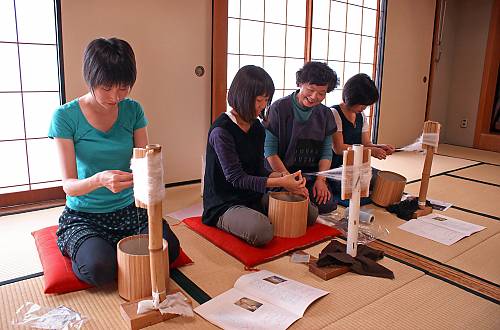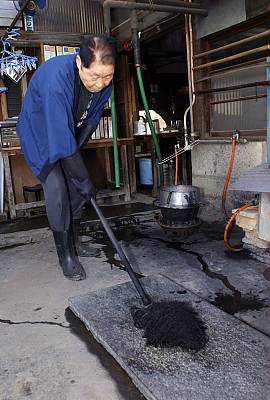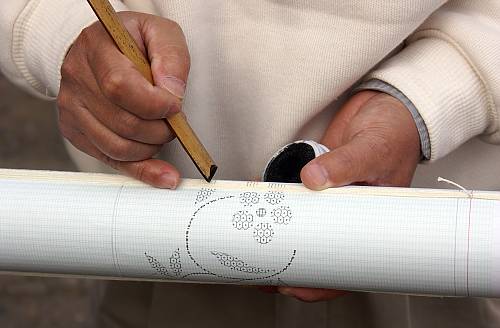Yuki-tsumugi, silk fabric production technique
Inscribed in 2010 (5.COM) on the Representative List of the Intangible Cultural Heritage of Humanity

Yuki-tsumugi is a Japanese silk-weaving technique found principally in Yuki City and Oyama City, along the Kinu River, north of Tokyo. The region boasts a warm climate and fertile lands, which are ideal for the growth of mulberry trees and sericulture. The Yuki-tsumugi technique is employed to produce pongee silk (also called raw silk) – a light and warm material with a characteristic stiffness and softness, traditionally used to make kimonos. Production of the material includes several stages: silk floss is spun into yarn by hand, with patterns added by hand-tying bundles of yarn before dyeing the yarn, then the silk is woven using a back-tension loom. The silk floss for the yarn in Yuki-tsumugi weaving is produced from empty or deformed silkworm cocoons, otherwise unusable for the production of silk yarn. This recycling process plays a significant role in supporting local sericulture communities. The traditional techniques to produce Yuki-tsumugi are transmitted by members of the Association for the Preservation of Honba Yuki-tsumugi Weaving Technique. This association is directly engaged in maintaining traditions of spinning, dyeing and weaving, passed down from generation to generation within the community. It promotes transmission of Yuki-tsumugi through exchange of skills, training of young weavers, and practical demonstrations.









